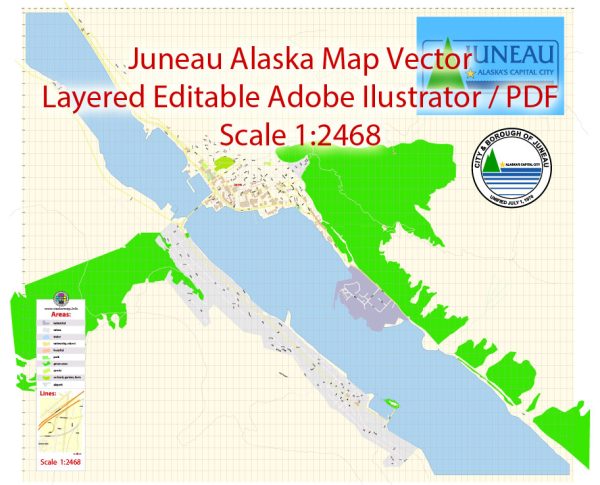Juneau, the capital city of Alaska, has a unique history of urban development shaped by its geography, indigenous heritage, and economic activities. Here’s an overview of the key aspects of Juneau’s urban development:
- Indigenous Presence:
- Before European exploration, the area now known as Juneau was inhabited by the Tlingit people for thousands of years. They established vibrant communities and engaged in trade with neighboring indigenous groups.
- Gold Discovery:
- The city’s modern history began with the discovery of gold in 1880 by Joe Juneau and Richard Harris. This led to a gold rush, attracting a surge of prospectors and settlers to the area.
- Establishment as the Capital:
- Juneau became the capital of the Alaska Territory in 1906, a decision influenced by its strategic location and accessibility. The city was chosen over other contenders like Sitka and Skagway.
- Mining Boom:
- The mining industry, particularly gold mining, played a crucial role in Juneau’s early development. The Treadwell Gold Mine, one of the world’s largest gold mines at the time, operated in the nearby Douglas Island.
- Transportation Infrastructure:
- In the early 20th century, transportation improvements, including the construction of roads and the Alaska Marine Highway System, helped connect Juneau to other parts of Alaska and the Lower 48 states.
- Economic Diversification:
- Over the years, Juneau’s economy diversified beyond mining to include government services, fishing, tourism, and timber. These industries contributed to the city’s resilience and growth.
- Cultural and Historical Preservation:
- Efforts have been made to preserve and showcase Juneau’s rich cultural and historical heritage. The city is home to museums, such as the Alaska State Museum, which highlight the history of the region and its indigenous peoples.
- Urban Planning Challenges:
- The city faces unique urban planning challenges due to its location between mountains and the Gastineau Channel. Limited space for expansion has led to careful consideration of land use and infrastructure development.
- Tourism Impact:
- The tourism industry has become a significant part of Juneau’s economy, drawing visitors with its natural beauty, wildlife, and historical attractions. The city has worked to balance the economic benefits of tourism with the preservation of its environment and heritage.
- Sustainability Initiatives:
- In recent years, Juneau has taken steps toward sustainability, embracing eco-friendly practices and emphasizing environmental conservation to protect the pristine wilderness that surrounds the city.
Juneau’s history of urban development is characterized by its adaptation to changing economic forces, its connection to Alaska’s unique natural environment, and the efforts to preserve its cultural heritage while fostering economic growth.


 Author: Kirill Shrayber, Ph.D.
Author: Kirill Shrayber, Ph.D.